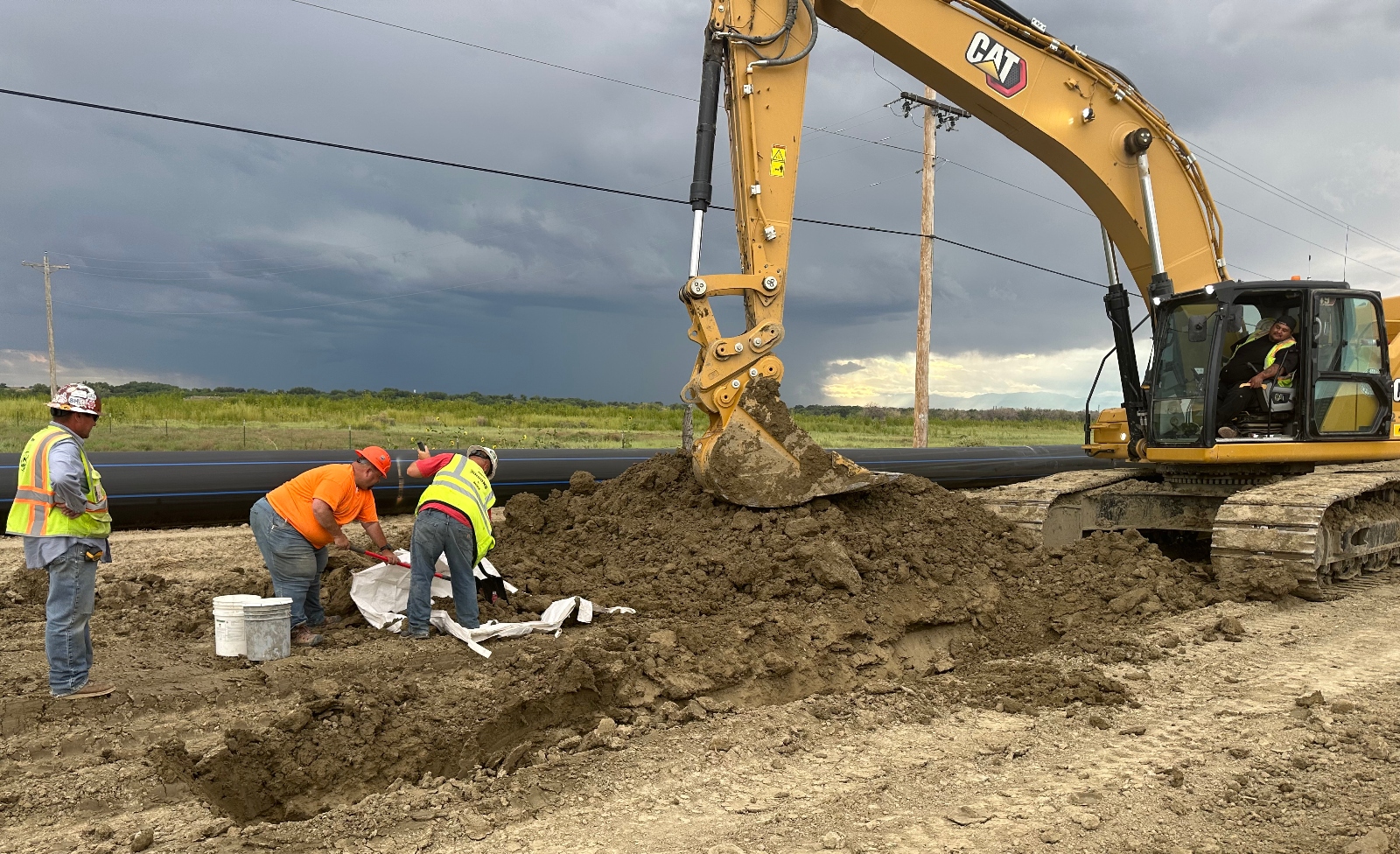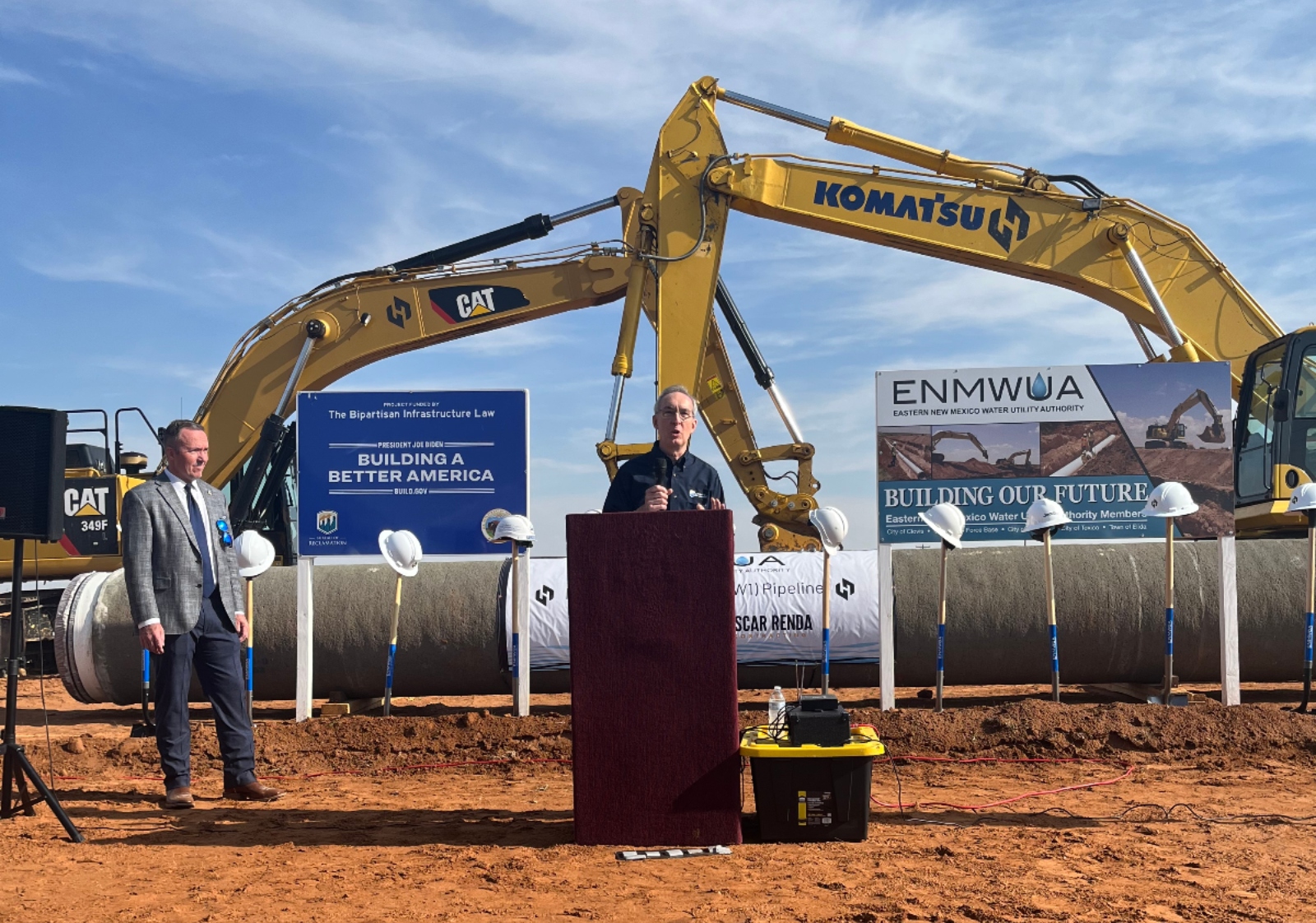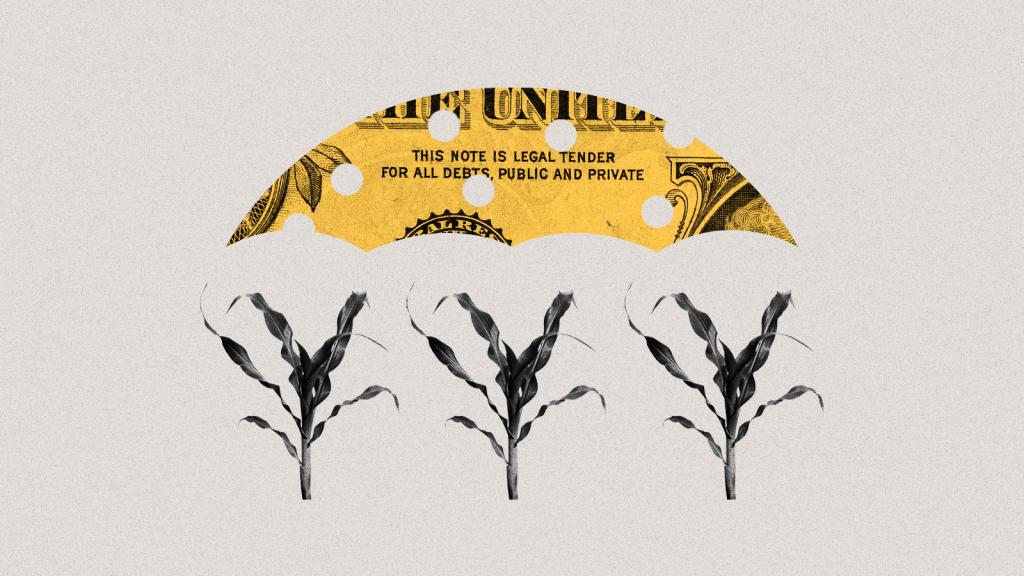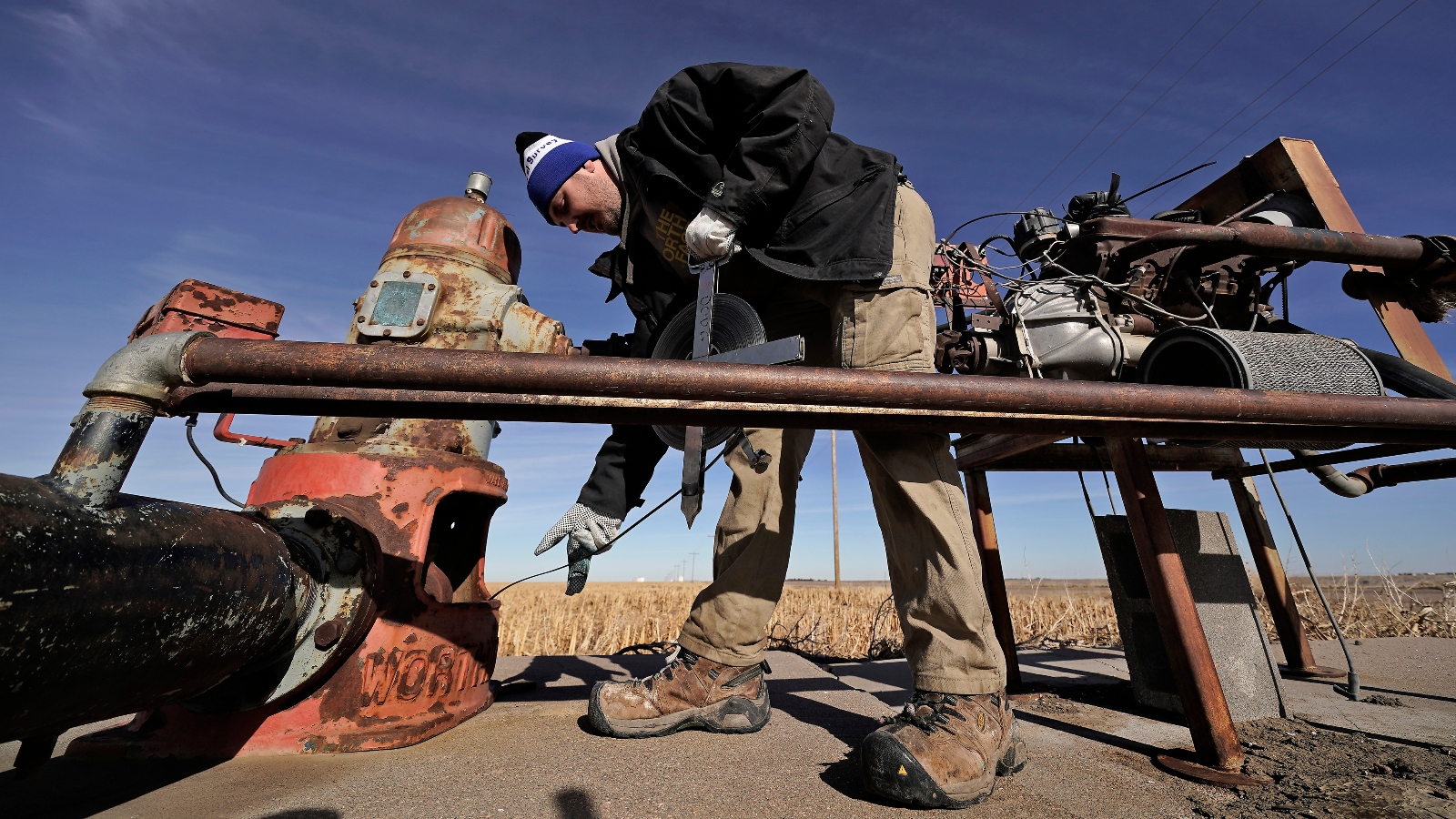Water is hard to come by on the Rocky Boy’s Reservation, and it has been for a long time. The Chippewa Cree tribe members who live on this reservation in north-central Montana get most of their water from a thin underground aquifer that is insufficiently replenished by occasional rainfall, and they’ve been under some form of water restriction for several decades. There’s only enough groundwater for cooking and hygiene, so residents aren’t allowed to water their yellowing lawns or run sprinklers. It’s illegal to operate a car wash.
“It’s been in place for most of my life,” said Ted Whitford, the director of the tribe’s water resources department. “And if we get a water main break on our main line, what happens is it drains the tanks, and pretty much puts everyone that’s on that system out of water.”
When the tribe reached a deal to obtain water rights for the reservation in 1997, the federal government agreed to pipe in water from a reservoir on the Marias River, almost 60 miles away, replacing the aquifer water. But for more than 20 years, that project proceeded at a crawl, with the government spending only enough money each year to build a small portion of the pipeline. In the meantime, the reservation’s water problems grew more dire with every spell of drought.
That changed last year. The federal Bureau of Reclamation, flush with money from the bipartisan infrastructure bill that Congress passed in 2021, directed $57 million to the Rocky Boy’s Reservation for the project. This year, the Bureau spent another $77 million, allowing construction crews to complete a new water treatment facility at the reservoir and build several miles of pipeline, extending the project closer to the reservation. In the coming years, the feds will pay more than 90 percent of the total project costs.
“When I became familiar with the project, in my mind, it was doomed from the beginning because it was a project that was scheduled to be completed over a 40- to 50-year period,” said Whitford. “We were getting spoon-fed funding. Now we can accelerate that process.” While he once doubted that the pipeline would reach the reservation’s central town of Box Elder in his lifetime, it now looks like the pipe could reach there as soon as 2025.
A looming depletion of groundwater across the U.S. has drawn nationwide attention in recent years, as local officials in states from Kansas to Arizona struggle to manage dwindling water resources even as homes and farms get thirstier. However, the federal government’s surprisingly robust push to address this crisis has drawn far less attention. With little fanfare, the Biden administration is funneling billions of dollars to a suite of infrastructure projects designed to break the country’s dependence on vanishing groundwater. An infusion of money from the 2021 infrastructure bill is now being deployed, reviving long-dormant proposals for pipelines, reservoirs, and treatment facilities in rural areas across the U.S. West.
These rural areas have long relied on underground aquifers as their only source of water, lacking access to the major rivers and reservoirs that sustain cities such as Denver, Colorado, and Los Angeles, California. As climate change leads to worsening droughts, the water level in these aquifers has fallen as there’s less rainfall to recharge them. As a result, many of these communities have suffered dire water access issues: Some have found their aquifers contaminated with unhealthy chemicals, while others have lost water access altogether as irrigated farms drain water away from household wells.
The $8.3 billion in funding from the infrastructure bill should help change that. By building pipelines to import clean water or facilities to treat contaminated groundwater, the administration will help address the sins of over-pumping in rural areas, cleaning up the mess made by a century of intensive agriculture. Under ordinary circumstances, the Bureau of Reclamation, which has managed Western water infrastructure for more than a century, would never have found the money to support big construction projects in cash-poor rural areas. The infrastructure bill has made the math for these projects much easier.
“We have had steady funding for these projects in our discretionary budget, but you need these bursts of investment because of the scope,” said Camille Calimlim Touton, the Bureau’s commissioner, in an interview with Grist. “It’s the octane to getting these done.”
Even though federal, state, and local officials all agree on the need for water projects like the one at Rocky Boy’s, the money for it only arrived thanks to the $550 billion legislative package that Democrats (and a small number of Republicans) passed before losing control of Congress in last year’s midterm elections. The new money is far from sufficient to address all the groundwater issues in the West, and there’s no guarantee that Congress will give Reclamation another burst of funding down the road. In the meantime, though, the Bureau has been able to complete projects that have languished for decades.
The largest of these projects — and the best indication of how Reclamation seeks to use its new windfall — is a $610 million pipeline effort called the Arkansas Valley Conduit. The 130-mile pipeline will deliver melted snow from a reservoir in the suburbs of Denver to a dry valley of southeast Colorado, relieving a long-standing water crisis in that area. Much of the Arkansas Valley’s groundwater contains high amounts of selenium, which can cause hair loss and cognitive impairment, as well as radionuclides that can increase cancer risk if consumed over long periods. Prolonged drought periods made this contamination even worse.
“Almost everybody down there drinks bottled water, because they can’t drink the water out of their faucets,” said Chris Woodka, the senior policy and issues manager at the Southeastern Colorado Water Conservancy District, which is managing the project. “They have to replace their appliances all the time because they get caked up with minerals. A lot of farmland has disappeared, and in some communities people have had to move out.”

Congress first tried to tackle this problem more than half a century ago when it authorized the Fryingpan-Arkansas Project in 1962 — then-president John F. Kennedy visited the valley that year to commemorate the effort — but funding for the project never materialized, and Reclamation had to shelve it. Aside from some preliminary construction in the 1980s, there was no progress on fixing the valley’s water issues. The amount of water needed to supply the parched communities was minuscule, but the area’s population was so sparse — most towns along the pipeline’s 100-mile length have just a few hundred residents — that providing the water was insurmountably expensive.
That changed last year when Reclamation announced its first suite of infrastructure grants. The Bureau pledged to fund around 80 percent of the dormant project, finished the final paperwork, and soon there were shovels in the ground. Woodka told Grist that the whole line should be operational by 2031, years earlier than previously projected.
“There are people who’ve been working on this for their careers who didn’t believe that it would happen,” said Touton. “So to be out there with 6 miles of pipe waiting to be put in the ground was just an amazing feeling.”
The new money has also been a game-changer in the llanos of eastern New Mexico, where federal dollars are helping to build a pipeline that will carry fresh mountain water from a reservoir called Ute Lake to two farming counties on the Texas border. In this case, the issue is quantity rather than quality: As big farming operations have expanded across the area in recent years, farmers have drained the local aquifers at an unprecedented rate, accounting for more than 90 percent of water usage in the area. Many of the area’s 73,000 residents have grown concerned that their wells will soon grow dry. After years of stasis, the local water authority is moving forward on an $666 million, 151-mile pipeline, with the federal government paying around 75 percent of the cost.

Over the course of the next five years, as Reclamation doles out dozens of new grants, it will reach areas where federal investment is almost nonexistent. The beneficiaries include small towns in central Montana such as Ryegate and Lavina, which have populations of 223 and 136 respectively, and tribal nations such as the Jicarilla Apache, who have fought for water access on their remote New Mexico reservation for decades. Had it not been for the jump in funding, these areas might never have seen long-promised upgrades and repairs.
Even so, Reclamation’s focus on bolstering water supply has critics in some areas, who argue that reservoirs holding surface water are no more reliable than underground aquifers. Many of the Bureau’s projects are holdovers from a previous era when large water infrastructure projects such as dams and pipelines were more common. In recent years, this “water buffalo” policy — a term referring to politicians who solved water issues by seeking out new supplies — has given way to a focus on reducing usage and increasing water recycling.
In the case of the New Mexico pipeline, some in the area think the better solution to the area’s water problems is to reduce irrigation demand rather than importing new supply. Warren Frost, an attorney for rural Quay County, opposes the Ute Lake pipeline and is suing to stop it. He argues that the local governments in the region should buy out some of the farmers and ranchers that are using up the area’s groundwater and repurpose that water for residential use.
“They haven’t taken any steps to buy water rights from the irrigators,” Frost told Grist. “They’re not trying to save their groundwater there. They’re just letting them pump it while they’re building this pipeline.” Frost said that buying out agricultural water rights would be much cheaper than the pipeline, and furthermore that the surface water supply from Ute Lake isn’t reliable given future drought: As has become clear on the Colorado River, even large river reservoirs are vulnerable to overuse and can vanish during drought periods.
Meanwhile, in California, environmentalists have criticized a long-standing proposal to create a new reservoir in the mountains north of Sacramento, arguing it will help perpetuate a pattern of unsustainable water use for farms and ranches. The Bureau has spent $60 million on that effort.
Touton acknowledged that the United States has a water demand problem as well as a supply problem. Even so, she said, the projects will ease or prevent dire health concerns in rural areas that have no other options for firming up their water supplies.
“We’re the largest water deliverer, that’s our mission, and we look to use these tools to meet our mission,” said Touton. “But that also means that we need to have water to deliver, and part of that is recognizing that it has to be a sustainable system.”



